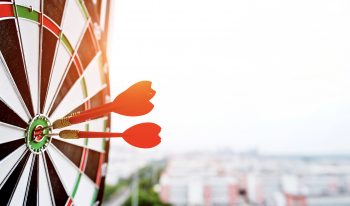When we exercise, we know that the warm-up and cool-down are important parts of the process in keeping our bodies strong and avoiding injury. The same is true when your dean is accompanying you to a donor meeting—you will need to spend some time with him or her in “warming up” or preparing for a successful meeting. Similarly, the “cool-down,” or follow-up meeting, with your dean is just as—if not more—important. In addition to providing a set time for you and your dean to plan further engagement with donors, the follow-up meeting is also a time in which the dean can ask questions and learn about development strategies in general.
Follow these 5 keys to ensure productive follow-up meetings:
1. Schedule time to meet with your dean
While it might seem obvious, this important step sets the expectation that the donor meeting isn’t the last step, but rather, part of the journey. Be sure to arrange time to visit with your dean shortly after the donor meeting so your memories are fresh and you are able to complete quick turnaround items in a timely fashion. Prepare an agenda for the meeting to maximize your time together. Consider using the following keys as your rough outline.
2. Answer questions
It is natural for your dean to have questions following a donor meeting, so provide an opportunity to get those questions on the table. Many of the answers may seem obvious to you. However, keep in mind that while you meet with donors on a regular basis, this may be new territory for your dean. Be patient and provide him or her with a judgement-free environment to explore anything the dean deems important.
3. Review what went well (and not so well…)
As a development professional, you are an expert at conducting donor meetings. For many deans, it is an added job duty that they may not have necessarily expected. Capture notes during the donor meeting, so you can coach your dean during the follow-up meeting on how you can work together to make the next donor meeting even better. Accentuate the positive—especially if your dean is new to meeting with donors—and be specific about how the dean could improve.
4. Partner on donor development strategy
As you know, your goal is to facilitate donor development and help your donors advance to the right on the Donor Commitment Continuum. This is a continual process, and the donor meeting is just a singular experience throughout the entire journey. To ensure you and your dean are serving your donors, determine what next steps are needed following the meeting. Some of these may include both you and your dean while others will be left to you. Help guide your dean through this process and determine the necessary action items.
5. Set a time for regular meetings
During your initial follow-up meeting with your dean, commit to touching base regularly and schedule recurring meetings. During these meetings, provide updates on the status of your follow-up items and coach your dean prior to other upcoming meetings. Also, encourage the dean to think of other potential donors who may be interested in becoming involved and invite him or her to refer them to you and the development team.
Before you invite your academic leader to join you for your next donor meeting, consider the entire process—planning, conducting, and following up. Just as the cool-down phase of an exercise routine maximizes the work-out, the follow-up meeting is a means to maximize the entire development process and set the stage for continued success in collaborating with your dean.
To take your relationship with your dean to the next level, join him or her at the Professional Fundraising for Deans and Academic Leaders workshop.


